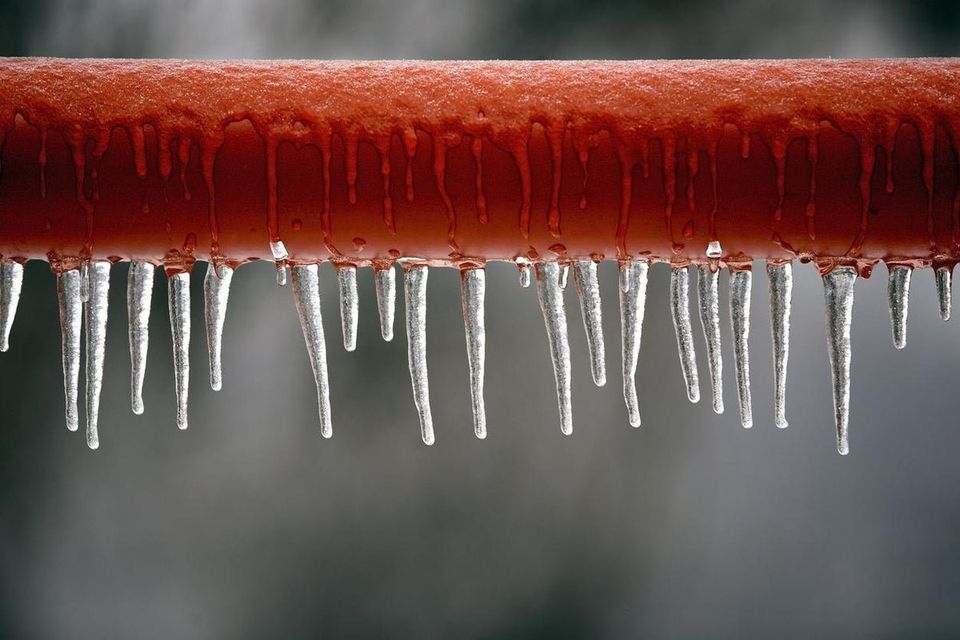This great article in the next paragraphs pertaining to How To Avoid Freezing Pipes is seriously enjoyable. Read on and draw your own findings.
:strip_icc()/snow-outdoor-faucet-pipes-4af65d1e5e904fb1aa7bf74071fe5d89.jpg)
Winter can ruin your plumbing, especially by freezing pipelines. Right here's how to prevent it from occurring and what to do if it does.
Intro
As temperatures decline, the threat of frozen pipelines increases, possibly bring about expensive fixings and water damage. Recognizing just how to avoid icy pipelines is crucial for house owners in cool environments.
Avoidance Tips
Shielding prone pipes
Cover pipelines in insulation sleeves or make use of heat tape to secure them from freezing temperature levels. Focus on pipelines in unheated or exterior locations of the home.
Home heating techniques
Maintain indoor areas sufficiently heated, particularly locations with plumbing. Open up cabinet doors to allow cozy air to distribute around pipelines under sinks.
Just how to determine frozen pipes
Seek decreased water flow from faucets, unusual smells or noises from pipelines, and visible frost on revealed pipelines.
Long-Term Solutions
Architectural adjustments
Take into consideration rerouting pipelines away from exterior walls or unheated locations. Add added insulation to attic rooms, cellars, and crawl spaces.
Upgrading insulation
Invest in premium insulation for pipes, attics, and wall surfaces. Appropriate insulation helps preserve regular temperature levels and minimizes the risk of icy pipelines.
Protecting Exterior Plumbing
Garden tubes and exterior taps
Detach and drain garden tubes prior to winter. Mount frost-proof faucets or cover outdoor faucets with insulated caps.
Comprehending Icy Pipelines
What creates pipes to freeze?
Pipes freeze when exposed to temperatures listed below 32 ° F (0 ° C) for expanded periods. As water inside the pipes ices up, it expands, putting pressure on the pipe wall surfaces and potentially creating them to rupture.
Risks and problems
Frozen pipelines can lead to water disturbances, residential or commercial property damage, and costly repairs. Ruptured pipelines can flooding homes and cause substantial structural damages.
Indicators of Frozen Pipes
Identifying icy pipelines early can avoid them from bursting.
What to Do If Your Pipes Freeze
Immediate actions to take
If you believe icy pipelines, maintain faucets available to ease pressure as the ice thaws. Make use of a hairdryer or towels taken in hot water to thaw pipes gradually.
Conclusion
Preventing frozen pipelines calls for positive procedures and quick feedbacks. By comprehending the reasons, signs, and preventive measures, house owners can shield their plumbing throughout winter.
5 Ways to Prevent Frozen Pipes
Drain Outdoor Faucets and Disconnect Hoses
First, close the shut-off valve that controls the flow of water in the pipe to your outdoor faucet. Then, head outside to disconnect and drain your hose and open the outdoor faucet to allow the water to completely drain out of the line. Turn off the faucet when done. Finally, head back to the shut-off valve and drain the remaining water inside the pipe into a bucket or container. Additionally, if you have a home irrigation system, you should consider hiring an expert to clear the system of water each year.
Insulate Pipes
One of the best and most cost-effective methods for preventing frozen water pipes is to wrap your pipes with insulation. This is especially important for areas in your home that aren’t exposed to heat, such as an attic. We suggest using foam sleeves, which can typically be found at your local hardware store.
Keep Heat Running at 65
Your pipes are located inside your walls, and the temperature there is much colder than the rest of the house. To prevent your pipes from freezing, The Insurance Information Institute suggests that you keep your home heated to at least 65 degrees, even when traveling. You may want to invest in smart devices that can keep an eye on the temperature in your home while you’re away.
Leave Water Dripping
Moving water — even a small trickle — can prevent ice from forming inside your pipes. When freezing temps are imminent, start a drip of water from all faucets that serve exposed pipes. Leaving a few faucets running will also help relieve pressure inside the pipes and help prevent a rupture if the water inside freezes.
Open Cupboard Doors
Warm your kitchen and bathroom pipes by opening cupboards and vanities. You should also leave your interior doors ajar to help warm air circulate evenly throughout your home.

I hope you enjoyed our section about How To Avoid Freezing Pipes. Thanks for taking the time to read through our piece. Enjoyed reading our piece of writing? Please share it. Help others discover it. I treasure your readership.
Schedule A Service
Comments on “Avoiding Frozen Plumbing: Best Strategies for Cold Weather”